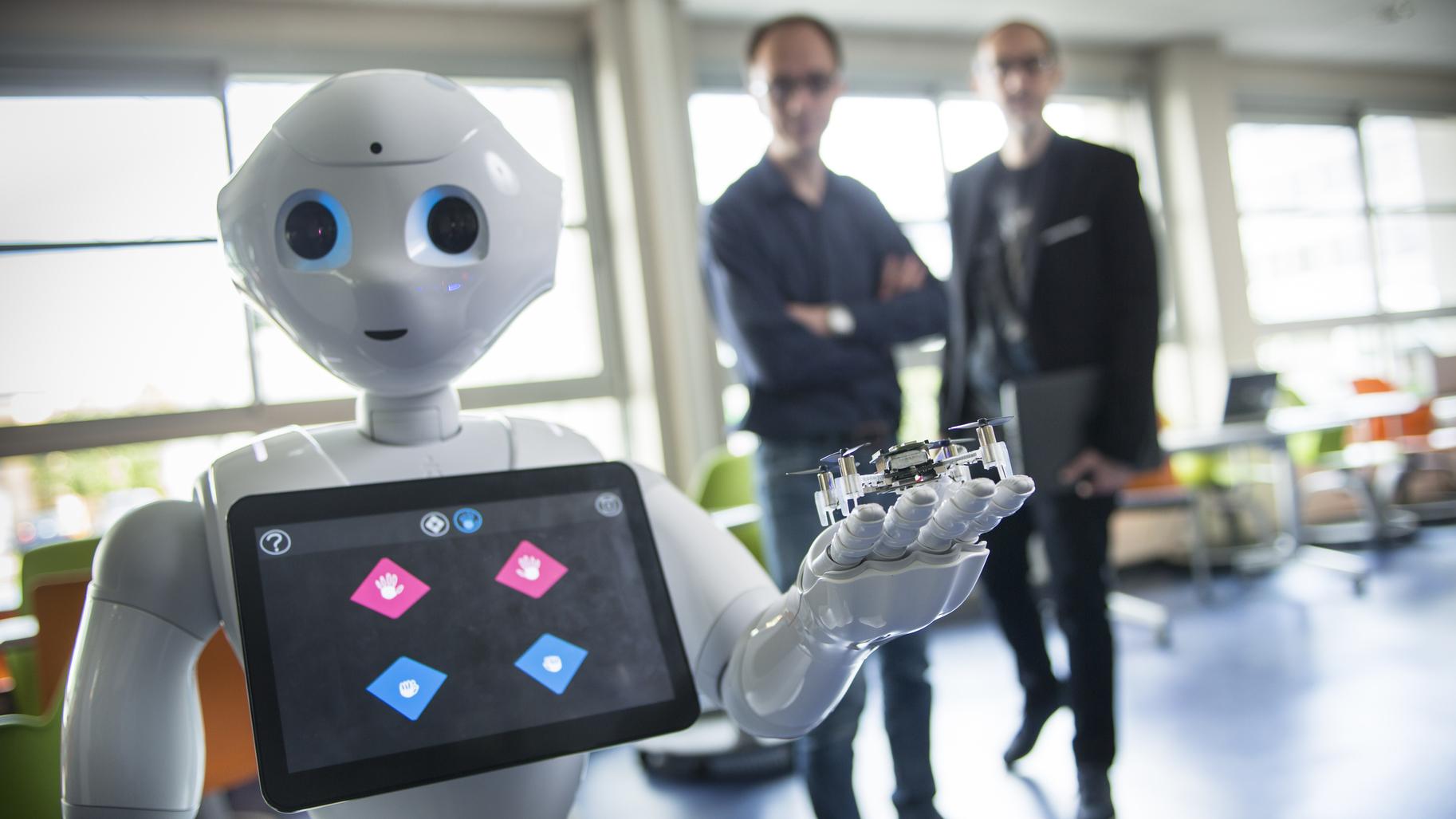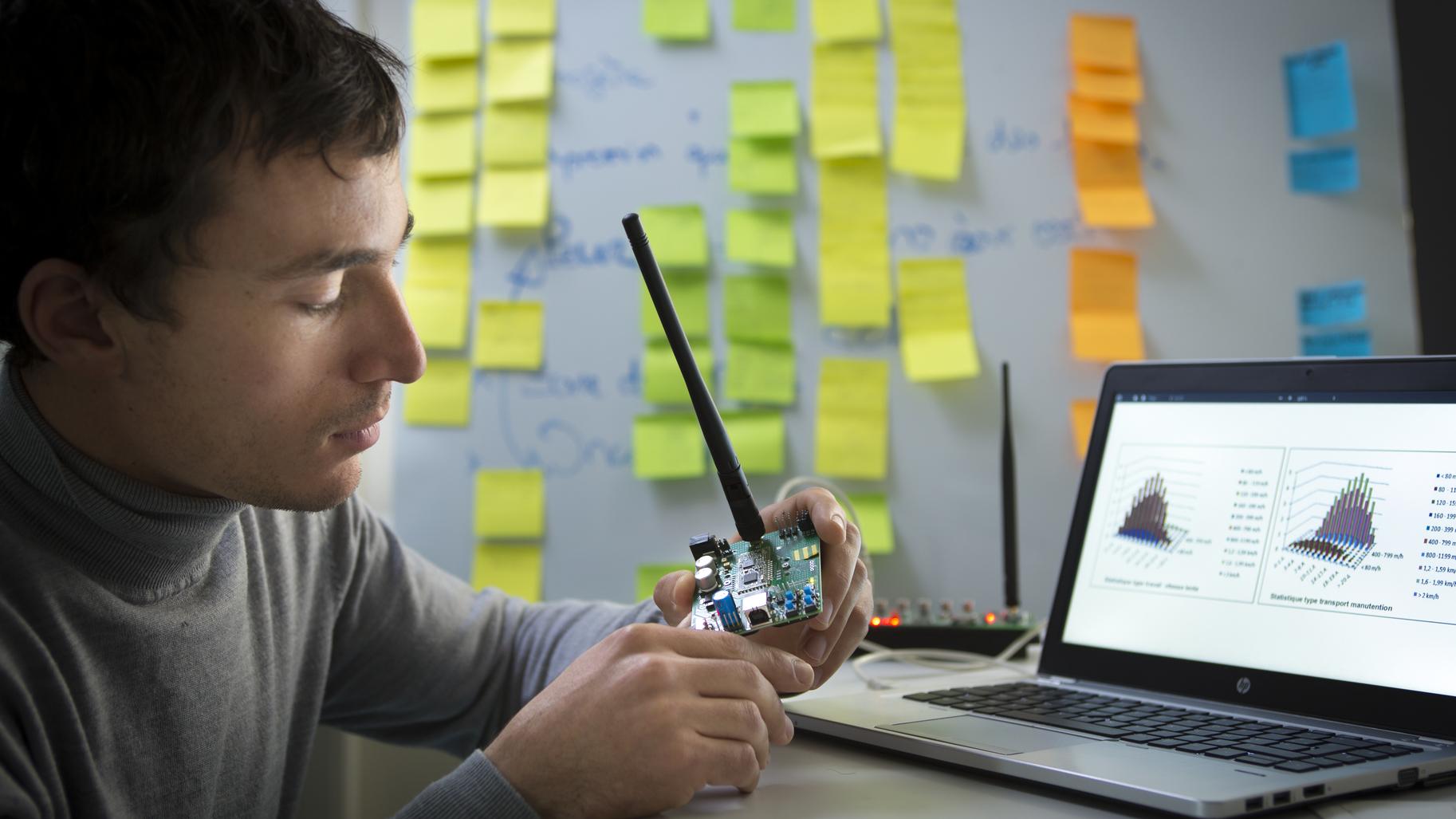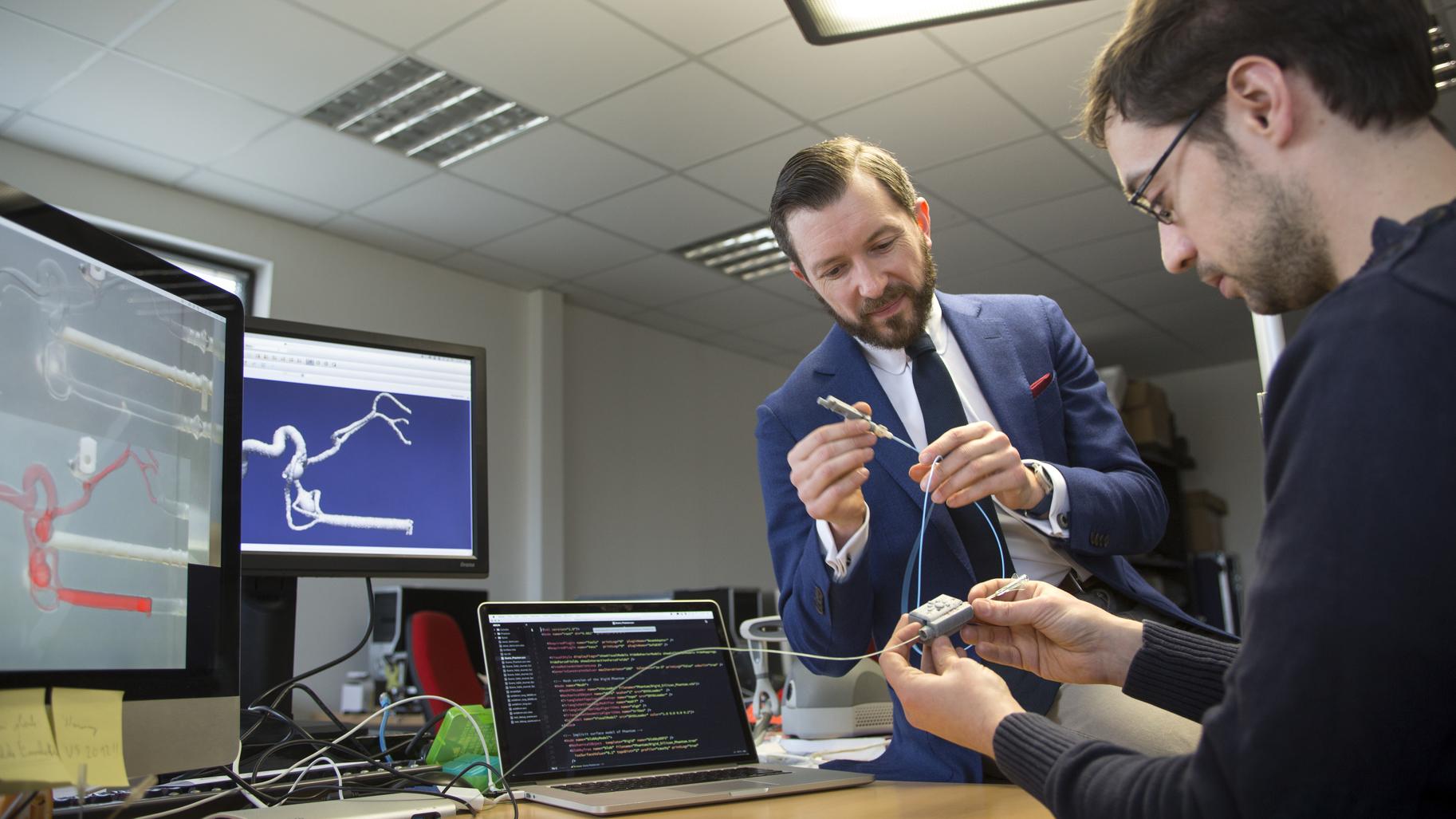Human-machine interaction and its importance to cobotics
Date:
Changed on 06/07/2021
Everyone is familiar with robots, which have been used in industry since the 1970s to perform repetitive tasks in place of humans. Twenty years later, the word cobot appeared. So, what is the difference? Robots operate on their own, separate from humans, while cobots assist them and, in some cases, work with them. “In the past, the limited perception capacities of robots meant they weren’t capable of identifying potentially dangerous situations. As a result, they weren't able to work alongside humans, for safety reasons”, explains Peter Sturm, deputy Scientific Director in charge of “Perception, Cognition and Interaction” at Inria. “In any case, this wasn’t necessary, as they were allocated precise tasks in a stable environment. Cobotics, on the other hand, involves humans and machines interacting with each other in the same space.”
The benefits of this are twofold: robots assist humans, helping them to lift heavy loads using an intelligent exoskeleton, for example, while human intelligence enables cobots to operate in more changing environments and to perform less repetitive tasks. “The potential with cobotics is huge. But, as is the case with other disruptive innovations, it’s up to companies to decide how best to use them”, says Peter Sturm.
Many Inria project teams are focused on the technological challenges raised by cobotics. Let’s take a look at an example involving the materials used: in the past, robots were rigid, and users had controls for getting them to execute tasks; the Defrost project team is currently working on advanced ‘soft’ robots. Compliant materials offer new capacities that are impossible with rigid materials, providing enhanced safety for users in the event of collisions.
“There are also significant challenges linked to the perception of cobots and the way in which they interpret what is happening around them”, continues Peter Sturm. Research is ongoing aimed at getting robots to recognise signs of tiredness in humans, or to detect their intentions in order to anticipate what they will do and to prevent accidents.
Teaching cobots is another key aspect of their development. Some researchers are attempting to teach them actions by showing them instruction videos. Others are looking to get them to imitate humans who are there in person. The key point is that cobotics is used in a changing environment, meaning that cobots who learn motions for a particular situation have to be able to transfer this knowledge to another task.
Peter Sturm, assistant to the scientific director, in charge of "Perception, cognition, interaction"
Lastly, there is the issue of communication between cobots and humans. “How will they decide who is to do what?”, wonders Peter Sturm. “This is a major problem, which the project team Auctus has been working on, and which is also applicable to the case of driverless vehicles. If humans and robots are to work together, there will come a point where one will need to take control of a task and the other will need to follow.”
These subjects are central to the four themes explored in this dossier, covering a wide range of projects (and this list is far from exhaustive). It covers the basic principles of cobotics, looking at the possibility of cobots caring for us or lightening the load of agricultural workers. Not forgetting the vital partnerships with companies in the field of industrial cobotics. All this goes to show that, despite the obstacles that have still to be overcome, cobotics has a bright future ahead of it.
First thought of in 1920 by the Czech playwright Karel Čapek, the robot, an artificial worker that would eventually replace - and eliminate - humans by automating their jobs, is celebrating its centenary in 2020. Much younger, its “child” the cobot, is the result of the hybridisation of robot technology and cognitive science, its goal being not to replace humans, but to cooperate with us and to help us achieve more, enabling us to go further. Long live the cobot!
Jean-Gabriel Ganascia, chairman of the CNRS ethics committee


